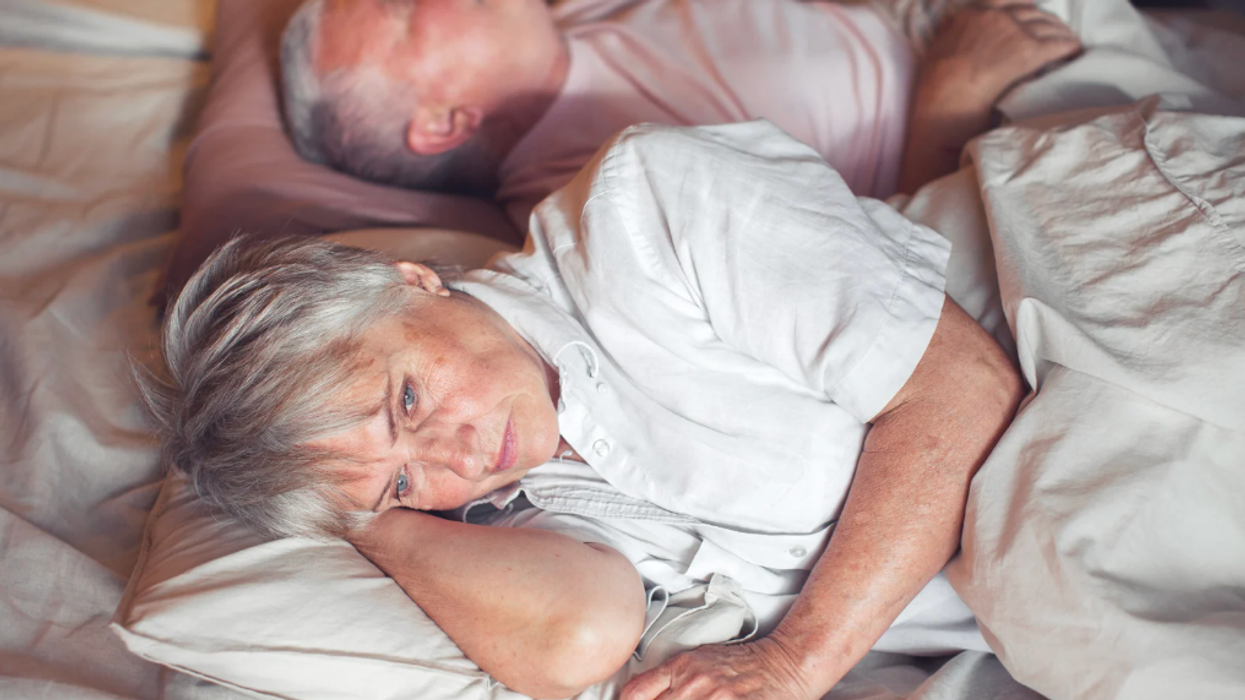Wim Hof, a 57-year-old who goes by the nickname “The Iceman,” holds 20 Guinness World Records for withstanding extreme temperatures. He’s run barefoot marathons in snow, dunked himself naked in freezing lakes, and climbed Mount Kiliminjaro dressed only in shorts. Today, he instructs classes in the Wim Hof Method to students like surfer Laird Hamilton, claiming that exposure to cold, meditation, and special breathing techniques can essentially hack our immune and nervous systems, shedding pounds and improving health and energy.
A few years ago, investigative journalist Scott Carney flew to Poland to meet Hof, planning to expose him as a charlatan or madman in a piece for Playboy. “He seemed to be claiming superpowers,” recalls Carney. “Like conquering the world’s tallest mountains with no cold-weather gear, controlling his body temperature and immune system at will. I’d built my career debunking men like him.”
[quote position="left" is_quote="true"]Our lifestyles are just too antiseptic and comfortable now.[/quote]
Instead, Carney says that he dug into the science driving Hof’s health claims and found that he was the real deal, zeroing in on simple but profound techniques that allow us to turn the extremes of our environment to condition our bodies and renew our lost evolutionary strength. After meeting Hoff, Carney says, “I hiked to the summit of Mt. Kilimanjaro without a shirt. I sat on the snowy bank of a river until the ice melted around me.”
After turning his experience into the book What Doesn’t Kill Us: How Freezing Water, Extreme Altitude and Environmental Conditioning Will Renew Our Lost Evolutionary Strength, out this month from Rodale Books, Carney spoke to GOOD about just how healthy it is to go extreme.
In 2013, you first flew to Poland to meet Wim Hof as a skeptic. Can you tell us about those early days?
I was living in Long Beach, California, had a belly paunch, backaches, and thought my days of youthful adventure were fading fast. Then I saw a picture of a nearly naked man sitting on a glacier. I thought maybe Hof had some very special physical abilities—perhaps genetically bestowed—to be able to endure the ice. But when he started suggesting he could teach people the same techniques, I was wary. I didn’t go to meet him with the intention of changing my health. I went to expose him as a charlatan. But instead I learned that his techniques are teachable, and that he has unlocked some ways for us to use the environment to stimulate our innate immune system.
In your book, you talk about the scientists who have studied Hof’s abilities. What did they find out?
In 2007, at the Feinstein Institute for Medical Research on Long Island, Hof was studied by Kenneth Kamler, a doctor who has worked on Everest. Hof was connected to heart and blood monitors and immersed in ice. Hof stayed in the ice for 72 minutes. His heart rate went down to 35 beats per minute. His breathing slowed down to once every few minutes. His core temperature initially declined a few degrees, but then rose again. Later, Peter Pickkers, a research scientist at Radboud University Medical Center in the Netherlands administered a harmless toxin (one made by the common E. coli bacteria found in our gut) to Hof. Ninety-nine percent of healthy people react with flulike symptoms to the toxin before their body realizes it is actually not harmful. Hof did not react with flulike symptoms, he had only minor headaches. Blood drawn while he was meditating remained resistant to the toxin for six days after it had left his body.
You point out that Hof might have unique abilities, perhaps some of them genetically bestowed.
Hof’s ability to withstand long exposure to cold might be partly due to the fact he has larger than usual amounts of heat-generating brown fat. His identical twin brother André also has the same high amount. They were both studied by scientists in the Netherlands.
But he was actually able to train volunteers to regulate their immune systems, right?
Yes, he trained twelve healthy volunteers in his method. They received injection of the toxin, and the trained volunteers were able to keep the body’s reaction at a far lower level than their untrained counterparts. An anti-inflammatory molecule called interleukin-10 increased more rapidly in the trained volunteers, while inflammatory molecules were lower.
How would you describe your health today, after learning Hof’s method?
I can’t claim that what I’ve experienced will apply to anyone but me, but my metabolism has changed pretty radically. I used to wear size 36 pants and now I wear size 31. I was given a treadmill test by Rob Pickels of the CU Sports Medicine and Performance Center in Boulder, Colorado. My bloodwork showed that when I exercise, I burn fat, not carbohydrates. I’ve added the equivalent of seven hours of exercise to my weekly routine, but actually my total exercise is about three hours a week. I was always afflicted by painful mouth canker sores, since I was a kid. After using Wim’s cold-exposure techniques, I haven’t gotten a single canker sore. That’s a small thing, but I’ve met people who have reversed rheumatoid arthritis or Crohn’s disease using his approach.
What is the scientific explanation for all of this?
We have this underlying biology that’s very adaptable and survival-oriented, but these days we are cocooned in comfort and we don’t activate it. So we’ve broken our fundamental biological links to the world around us. Indoor plumbing, heating systems, grocery stores, cars, and electric lighting now let us control our environment so thoroughly that we can live in perpetual homeostasis. But we evolved differently. We evolved to survive variations in our environment.
[quote position="right" is_quote="true"]In one study, overweight diabetic men were put into a cold room and their insulin resistance improved.[/quote]
Think of our ancestors who mounted expeditions across frozen mountains and parched deserts with only a whisper of technology to aid them. Simply reintroducing some common environmental stressors can bring back some of our lost evolutionary vigor. There’s a hidden biology we can tap into. We need environmental and physical variations that invigorate our nervous systems. We are living today with an evolutionary mismatch. Ray Cronise, a former NASA scientist, says we’re overlit, overfed and overstimulated.
What does cold do for us?
First, it activates and increases your brown fat (BAT). BAT is a type of fat that the body uses to generate heat. So brown fat boosts our metabolism and burns calories. It stimulates your body to generate more muscle mitochondria, the energy powerhouses inside your cells. In one study, overweight diabetic men were put into a cold room and their insulin resistance improved.
Why would someone’s immune system improve?
We don’t have all the science yet, but I can speculate that it’s because your nervous and immune systems are connected. That’s been proven scientifically, and we also know it from the simple fact that when you’re in better spirits it’s harder to get sick. But if you’re depressed and stressed you’re likelier to come down with a cold. The way I look at it, our lifestyles are just too antiseptic and comfortable now. These cold showers and strenuous breathing techniques essentially give our immune system something to occupy it so it doesn’t turn on itself.
[quote position="full" is_quote="true"]You have to realize that your fear around this momentary discomfort—a discomfort that will definitely be there—is mostly in your mind.[/quote]
What is your routine these days?
I do his deep-breathing routine for 15 minutes every morning. The technique is outlined in my book, but it involves multiple rapid breaths followed by breath retention. I do 50 pushups while holding my breath. When I get in the shower, I expose myself to one minute of cold water at the end. The intensive cold shower or ice water activates your nervous system immediately. I keep the temperature of my home in the low 60’s. Just keeping the temperature of your home low is like doing a low-grade workout all the time. Your body has to work a little to keep warm. You can actually lose weight by dialing your thermostat down like that. And I run outside shirtless two or three times a week, no matter the temperature.
How did it feel climbing Mt. Kilimanjaro in shorts?
It was awesome and exhausting, but very liberating. The interesting part is not being shirtless. The interesting thing is the speed at which we did it, which was five times faster than the normal ascent. We did it in only 28 hours. Usually people go slowly because they have to acclimate to the altitude change. The peak is around 18,000 feet. Forty percent of climbers fail because of acute mountain sickness. In fact, some mountaineers called our climb a suicide mission. But the key was that we compensated with Wim’s breathing method. His method increases the rate of respiration and adds more oxygen to your tissues, and we did the breathing technique long before we had to. So we had enough oxygen in our systems to quickly climb. If you apply that concept to regular exercise, you want to breathe heavily before you get to the maximum exertion, before you feel you have to catch your breath.
In your book you say, “I don’t like to suffer. Nor do I particularly want to be cold, wet, or hungry. If I had a spirit animal it would probably be a jellyfish floating in an ocean of perpetual comfort.” Most of us are like you. What do you say to those who’d like to feel healthier, but shiver at the mere thought of getting icy water?
You have to realize that your fear around this momentary discomfort—a discomfort that will definitely be there—is mostly in your mind. If you’ve gone through your whole life and never been exposed to big temperature variations, then experiencing cold is going to be like going to the gym your first time. Of course it’ll hurt—I’m not going to sugar coat that for people.
But what’s exciting is that you’re suddenly opening your body to a new type of experience, and you will see very rapid changes in your physiology. Pretty quickly you’ll start to feel euphoria as you release all these hormones like cortisol and norepinephrine. It’s like a runner’s high. It’s a natural response.
What’s your final takeaway?
No environmental extreme induces as many beneficial changes in human physiology as the cold does. Use it.















 Robin Williams performs for military men and women as part of a United Service Organization (USO) show on board Camp Phoenix in December 2007
Robin Williams performs for military men and women as part of a United Service Organization (USO) show on board Camp Phoenix in December 2007 Gif of Robin Williams via
Gif of Robin Williams via 
 A woman conducts a online color testCanva
A woman conducts a online color testCanva A selection of color swatchesCanva
A selection of color swatchesCanva A young boy takes a color examCanva
A young boy takes a color examCanva 

 Pictured: A healthy practice?
Pictured: A healthy practice?


 Is solo sleep the best sleep?
Is solo sleep the best sleep?  Some poeple want their space, and some can't imagine being that seperate.
Some poeple want their space, and some can't imagine being that seperate. 